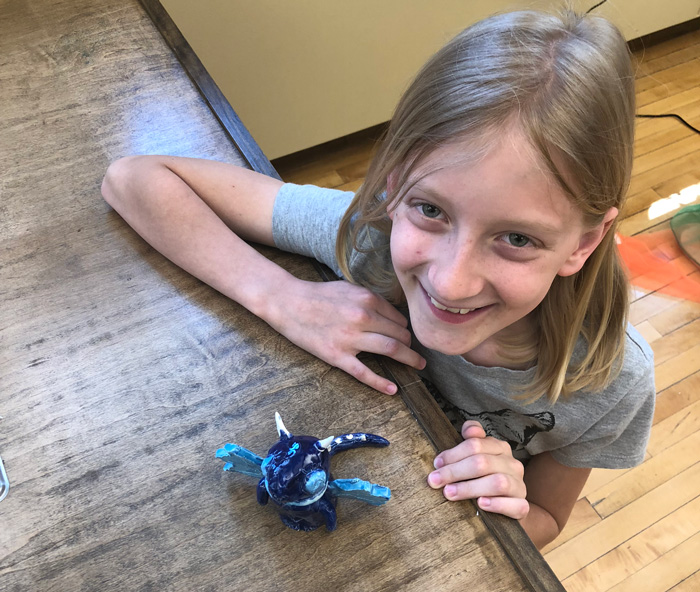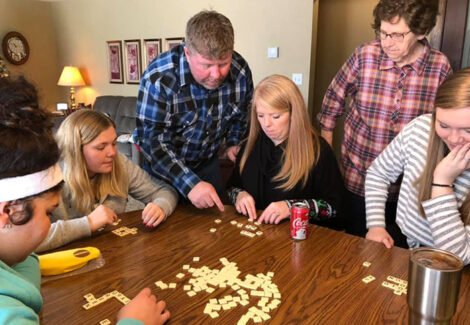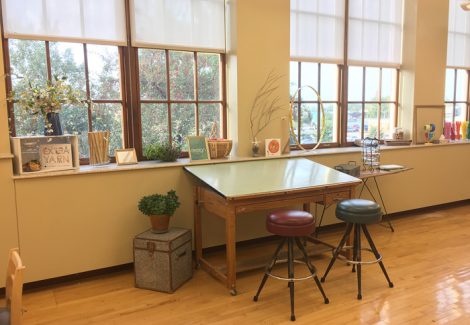Literature can move us in ways that few other things can. When we read or hear stories we are transported to another place and time. We learn about the world and even more about ourselves. The power in stories is that they create relationships.
“A reader lives a thousand lives before he dies. The man who never reads lives only one.”
– George R.R. Martin
Stories help people connect with people, with materials, with art, and with the world. We can see the way stories live through us in the lives of all people, but it is most apparent when watching children.
When I met Emily in our Maker Studio she showed me how interconnected our lives are with the literature we read.
Person to Person
When Emily stepped into the Maker Studio lugging around a copy of Eldest by Christopher Paolini, a story about a dragon and her rider, it immediately caught my eye. Having read the book myself when I was just a few years older than her, it brought me back to a piece of my childhood.
As I engaged with her over the plot, I saw myself in her reactions and excitement. Each time she came into the studio we would talk about new plot developments and how she felt about them.
Through this weekly process, we got to know each other through the characters we identified with and our favorite parts of the story. She would often quiz me on what I remembered about the books and she’d tease me over forgotten names and places.
Person to Materials
Often when talking about these stories, we would wander the studio and experiment with materials. Emily was always drawn to the malleable nature of items like modeling clay and pipe cleaners.
What started as experimenting soon turned into storytelling as we created characters, scenery, and backstories. Emily grew more and more attached to clay and eventually moved to low-fire clay to continue her storytelling path.
Materials to Art
As we molded with clay and talked about the books that Emily was reading, I started to see an idea take shape.
“I’m going to make a dragon,” she told me.
As I watched, she made deliberate details on the clay: long spikes on the tail, wings spread and ready for flight, and a collar of course. The dragon’s name was Saphira. When Emily finished, her eyes shined with pride.
Two weeks passed and I brought the freshly-fired dragon from the kiln. Emily was amazed at the way it looked and sat down to glaze it. She worked intently for almost an hour making sure that every piece was painted and designed as she had imagined in her head while reading about the dragon in the book.

Art to the World
As time goes on, Emily may lose the dragon sculpture she created in Maker Studio – but she will never lose the feeling of warmth those books gave her or the feeling of bonding with others over a good book.
By immersing herself in the story she was reading, she gave herself an intimate way to bond with materials and art. As she grows, she will also take the lessons she learned as she read of fantasy and times of struggle out into the world.
After all, one can learn a lifetime’s worth of lessons by living in the realm of books, just as I can be reminded of the interconnectedness of lives in just a few afternoons in our Maker Studio.
“A reader lives a thousand lives before he dies. The man who never reads lives only one.” – George R.R. Martin




